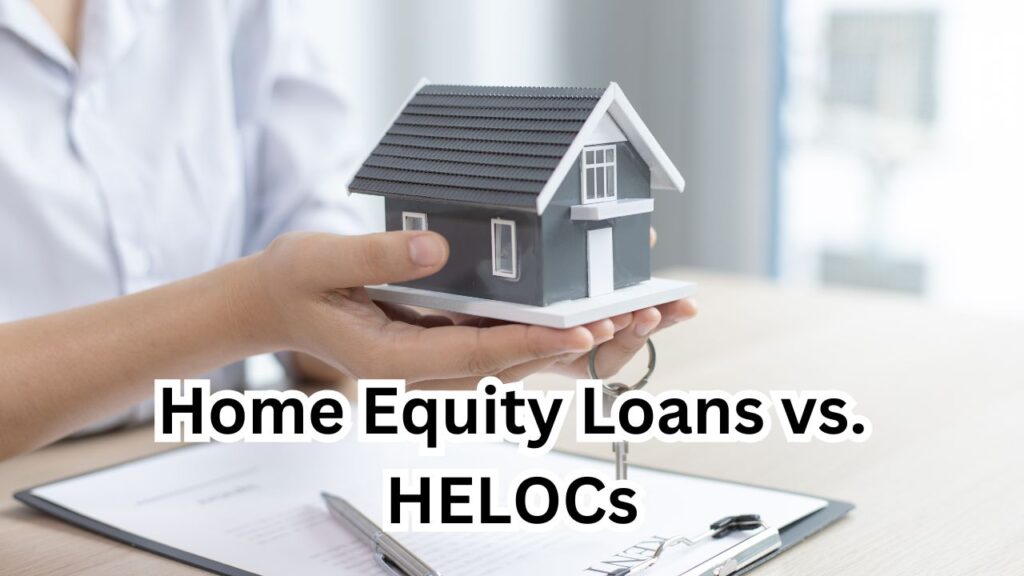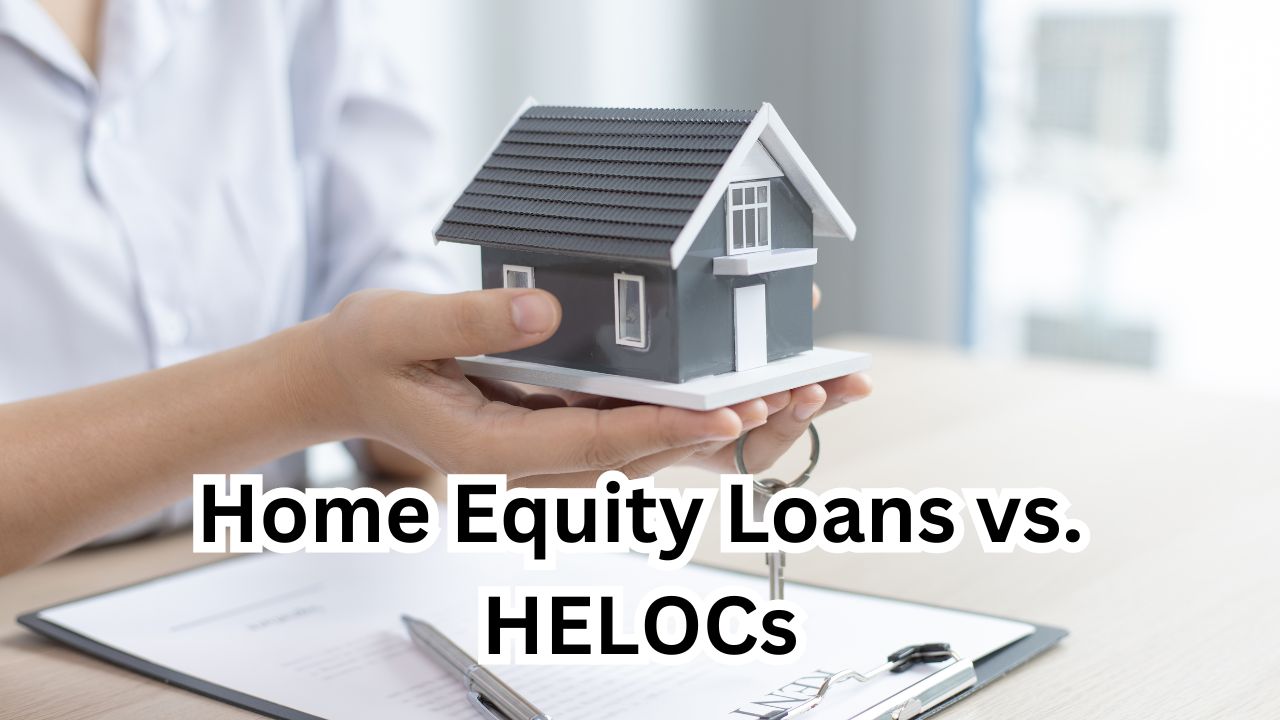Home equity loans and Home Equity Lines of Credit (HELOCs) are popular financial tools for homeowners looking to leverage the equity in their homes. Both options allow you to borrow against the value of your home, but they function differently and are suited to different financial needs. This comprehensive guide will help you understand the key differences between home equity loans and HELOCs, their pros and cons, and how to determine which option is right for you.
1. Understanding Home Equity
Before diving into the specifics of home equity loans and HELOCs, it’s essential to understand what home equity is. Home equity is the portion of your home that you truly own, calculated as the difference between your home’s market value and the outstanding balance on your mortgage.
For example:
- Home Value: $300,000
- Mortgage Balance: $200,000
- Home Equity: $100,000
This equity can be accessed through home equity loans or HELOCs, providing you with a source of funds for various purposes.
2. What is a Home Equity Loan?

A home equity loan, often referred to as a second mortgage, allows you to borrow a lump sum of money against your home’s equity. This type of loan typically comes with a fixed interest rate and fixed monthly payments over a set period, usually ranging from 5 to 30 years.
Key Features of Home Equity Loans:
- Lump Sum Payment: You receive the entire loan amount upfront.
- Fixed Interest Rate: The interest rate remains constant throughout the loan term.
- Fixed Repayment Schedule: Regular monthly payments that cover both principal and interest.
Pros of Home Equity Loans:
- Predictability: Fixed interest rates and fixed payments provide stability and make budgeting easier.
- Lower Interest Rates: Generally lower than credit card rates and personal loans due to the loan being secured by your home.
- Tax Deductible Interest: In some cases, the interest paid on a home equity loan may be tax-deductible.
Cons of Home Equity Loans:
- Risk of Foreclosure: Your home is collateral; failure to repay could result in losing your home.
- Upfront Costs: May include fees for appraisal, origination, and closing costs.
- Fixed Amount: Limited flexibility, as you can’t borrow more once the loan is finalized.
Top Personal Loan Providers in the United States: Rates and Benefits Compared
3. What is a HELOC?
A Home Equity Line of Credit (HELOC) is a revolving line of credit that allows you to borrow money as needed, up to a predetermined limit, using your home as collateral. Unlike home equity loans, HELOCs usually have variable interest rates and function similarly to a credit card.
Key Features of HELOCs:
- Credit Limit: You can borrow up to a set limit, typically determined by your home’s equity and creditworthiness.
- Variable Interest Rate: The interest rate can fluctuate based on market conditions.
- Draw Period and Repayment Period: HELOCs have a draw period (usually 5-10 years) where you can borrow funds, followed by a repayment period (typically 10-20 years) where you repay the borrowed amount.
Pros of HELOCs:
- Flexibility: Borrow as much or as little as you need, when you need it, up to the credit limit.
- Interest-Only Payments: During the draw period, you may have the option to make interest-only payments.
- Lower Initial Costs: Often lower upfront costs compared to home equity loans.
Cons of HELOCs:
- Variable Interest Rates: Rates can increase, making payments unpredictable and potentially more expensive.
- Risk of Foreclosure: Your home is collateral; failure to repay could result in losing your home.
- Temptation to Overspend: The revolving nature can lead to borrowing more than you can afford to repay.
4. Comparing Home Equity Loans and HELOCs
When deciding between a home equity loan and a HELOC, consider the following factors:
1. Purpose of the Loan:
- Home Equity Loan: Best for large, one-time expenses such as home renovations, debt consolidation, or major purchases.
- HELOC: Ideal for ongoing or variable expenses, such as medical bills, education costs, or a series of home improvements.
2. Interest Rates:
- Home Equity Loan: Fixed interest rates provide stability and predictability.
- HELOC: Variable interest rates can fluctuate, leading to potential changes in monthly payments.
3. Repayment Structure:
- Home Equity Loan: Fixed monthly payments over the life of the loan.
- HELOC: Flexible payment options, with interest-only payments during the draw period and higher payments during the repayment period.
4. Access to Funds:
- Home Equity Loan: Lump sum payment at the start, no additional borrowing.
- HELOC: Revolving credit line allows for multiple withdrawals up to the credit limit.
5. Costs:
- Home Equity Loan: May have higher upfront costs due to appraisal and origination fees.
- HELOC: Generally lower initial costs, but variable interest rates can lead to higher long-term costs.
5. When to Choose a Home Equity Loan
Consider a home equity loan if you:
- Need a large, fixed amount of money for a specific purpose.
- Prefer the stability of fixed interest rates and fixed monthly payments.
- Want to consolidate high-interest debt into a single, lower-interest loan.
- Plan to use the loan for purposes where the interest might be tax-deductible (consult a tax advisor).
6. When to Choose a HELOC
Consider a HELOC if you:
- Require flexible access to funds over time rather than a lump sum.
- Are comfortable with variable interest rates and the possibility of changing payments.
- Have ongoing or uncertain expenses that require periodic funding.
- Want the option to borrow only what you need, reducing the amount of interest paid.
7. Application Process for Home Equity Loans and HELOCs
The application process for both home equity loans and HELOCs involves several steps:
1. Evaluate Your Equity:
- Calculate your home’s current market value and subtract your outstanding mortgage balance to determine your available equity.
2. Check Your Credit Score:
- A higher credit score can improve your chances of approval and secure better interest rates.
3. Gather Documentation:
- Prepare necessary documents, such as proof of income, employment history, tax returns, and details of your current mortgage.
4. Compare Lenders:
- Shop around for different lenders and compare their interest rates, fees, and terms.
5. Submit Your Application:
- Complete the application form with your chosen lender and provide the required documentation.
6. Underwriting and Approval:
- The lender will review your application, perform a credit check, and may require an appraisal of your home.
7. Closing:
- If approved, you’ll go through the closing process, which involves signing the loan agreement and paying any closing costs.
8. Accessing Funds:
- For a home equity loan, you’ll receive a lump sum payment. For a HELOC, you’ll receive access to a line of credit.
8. Managing Your Home Equity Loan or HELOC
Once you have secured a home equity loan or HELOC, it’s important to manage it responsibly:
1. Budget for Repayments:
- Ensure that you can comfortably afford the monthly payments, including any potential increases for a HELOC.
2. Monitor Interest Rates:
- Keep an eye on interest rate changes if you have a HELOC with a variable rate.
3. Avoid Over-Borrowing:
- Only borrow what you need and can repay, especially with a HELOC where it’s easy to overspend.
4. Use Funds Wisely:
- Prioritize using the borrowed funds for essential or value-adding purposes, such as home improvements or consolidating high-interest debt.
5. Stay in Communication with Your Lender:
- If you encounter financial difficulties, contact your lender to discuss possible solutions, such as modifying your repayment plan.
9. Risks and Considerations
While both home equity loans and HELOCs offer valuable financial benefits, there are risks and considerations to keep in mind:
1. Risk of Foreclosure:
- Both types of loans use your home as collateral, so failure to repay could result in losing your home.
2. Impact on Credit Score:
- Taking on additional debt can affect your credit score and debt-to-income ratio.
3. Market Fluctuations:
- Changes in the housing market can affect your home’s value and the equity available.
4. Fees and Costs:
- Be aware of the fees associated with both types of loans, including appraisal, origination, and closing costs.
5. Long-Term Financial Impact:
- Consider the long-term financial implications, especially if you’re nearing retirement or planning significant life changes.
10. Conclusion
Choosing between a home equity loan and a HELOC depends on your specific financial needs, goals, and comfort with different repayment structures. Home equity loans offer the stability of fixed interest rates and fixed payments, making them ideal for large, one-time expenses. HELOCs provide flexibility and ongoing access to funds, suitable for variable or recurring expenses.
